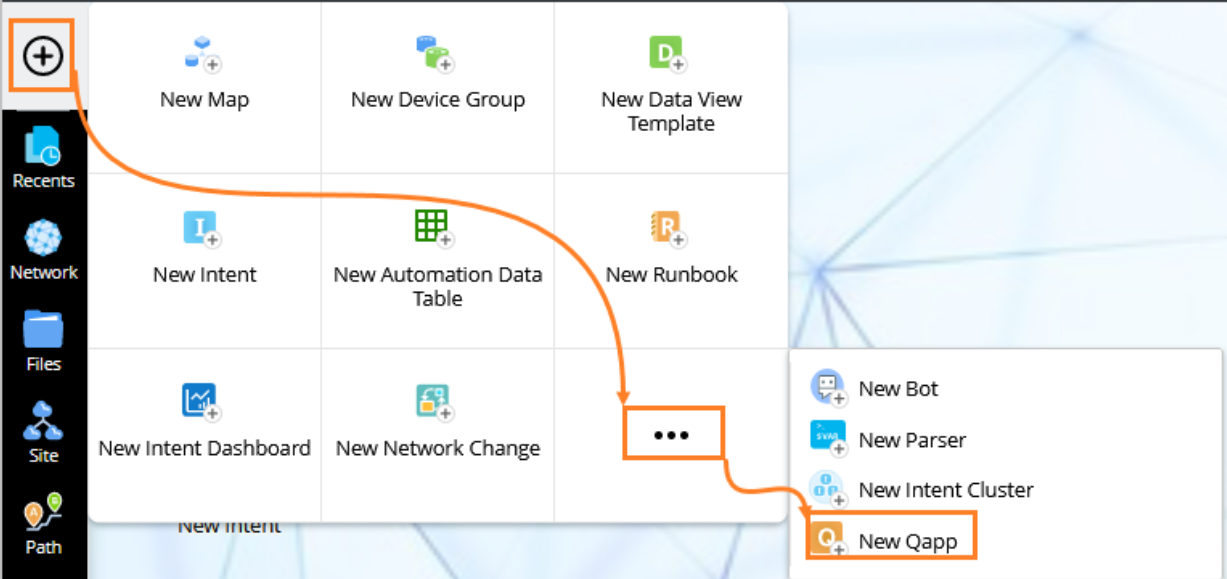R12.1-JA-2025June05
Using Configuration Command to Obtain OSPF Configuration
- Click the "+" icon from the taskbar, go to three dotted menu and then select New Qapp from the drop-down.

- At the Start node, use the default option Map in the Define Qapp Device Input field. It means that the Qapp takes all devices visible on the map as the input devices.
- Extend a Canvas node from the Start node and double-click the Canvas node to enter the Canvas editor.
- At the Device Queue node, keep the default options.
- Extend a this node from the Device Queue node, and keep the default options.
- Extend a Configuration command node from the this node. The configuration command is used to retrieve data from the device configuration. It is a built-in data type for all supported device types, and you do not need to enter a command to retrieve configurations. Instead you select the source to get configurations (Current Baseline, or user-defined option at runtime) while running the Qapp.

Note: If scheduling parsers is run regularly, Current Baseline is a good option for better performance since the system does not need to retrieve the data from the live network. If you are not sure whether the current baseline data is available, select the User-defined option at runtime option and select Pull live data once when running the Qapp.
- Click the Configuration node, click Select Parser, select Built-in Parser > Configuration > Cisco IOS > OSPF [Cisco IOS], and click OK. The Parser the OSPF [Cisco IOS] is to parse OSPF Configuration.
- Extend a Table node from the Configuration node and click the
 icon, select the ospf_config variable and click Attribute>> to add it to the attribute table. ospf_config refers to the original text of the device configuration file.
icon, select the ospf_config variable and click Attribute>> to add it to the attribute table. ospf_config refers to the original text of the device configuration file.